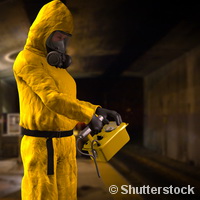United response to nuclear safety
Radioactivity as a result of the Chernobyl nuclear power plant disaster in the 1980s is still present in the environment. But 17 national emergency management organisations and 33 research institutes have come together to prevent or minimise the impact of such a thing happening again. Their objective has been to ensure that Europe can respond better to similar emergencies in the future. Over a five-year period, the project EURANOS ('European Approach to Nuclear and Radiological Emergency Management and Rehabilitation Strategies') utilised scientific knowledge and technology in preparing Europe's response in the event of a radiation emergency, and developing long-term plans for rehabilitation. This was supported with funding of EUR 14.7 million, of which nearly EUR 7 million came from the European Commission. The project was seen as vital because of the varying levels to which individual countries were equipped to respond to radiation emergencies. Such an incident could occur in a country as a result of an accident or of a deliberate terrorist attack. This could then have a knock-on effect from one country to another. But by sharing expertise, data and technology between Member States, Europe can place itself at a better position to respond more effectively to a radiation emergency. Some of the measures the project devised included a compendia containing a wealth of state-of-the-art information for emergency management. The project also further improved 'Decision Support Systems' (DSS) aimed at providing support to the national emergency management teams (EMT) in collecting on-line and real-time measurements. This involved analysing the current radiological situation, estimating its future development, and ranking the countermeasures. In addition the project sought ways to develop the long-term management and rehabilitation of potentially contaminated areas. As well as conducting training courses on strategies and guidance for the sustainable rehabilitation of living conditions in long-term contaminated territories. Leading the project was Wolfgang Raskob, a Meteorologist from the Karlsruher Institut für Technologie (KIT) in Germany. He says, 'The success of the project lies in the communication that has now been developed between the Member States. Although EURANOS has ended, we have taken what we have learnt from this project and transferred it further into the NERIS Platform. Wolfgang Raskob explains further, 'This will be a contact point for all related industry, research and governmental organisations for improving Europe's response rate in an emergency and in the longer-term. It must be also stressed that local stakeholders are an important part of the decision making process within the various countries, and this platform will deepen this aspect further in our research projects. We now have 49 partners involved.' But he stresses, this platform also has another dimension, with the start of a European research project called PREPARE, this stands for 'Innovative integrative tools and platforms to be prepared for radiological emergencies and post-accident response in Europe'. This project aims to close gaps in emergency management and rehabilitation, following the Fukushima accident. In this way, the EURANOS movement continues in a sustainable Platform and in research on a European level, which is needed to be better prepared for the future.'For more information, please visit: EURANOS http://www.euranos.fzk.de/index.php NERIS http://www.eu-neris.net/
Countries
Germany



